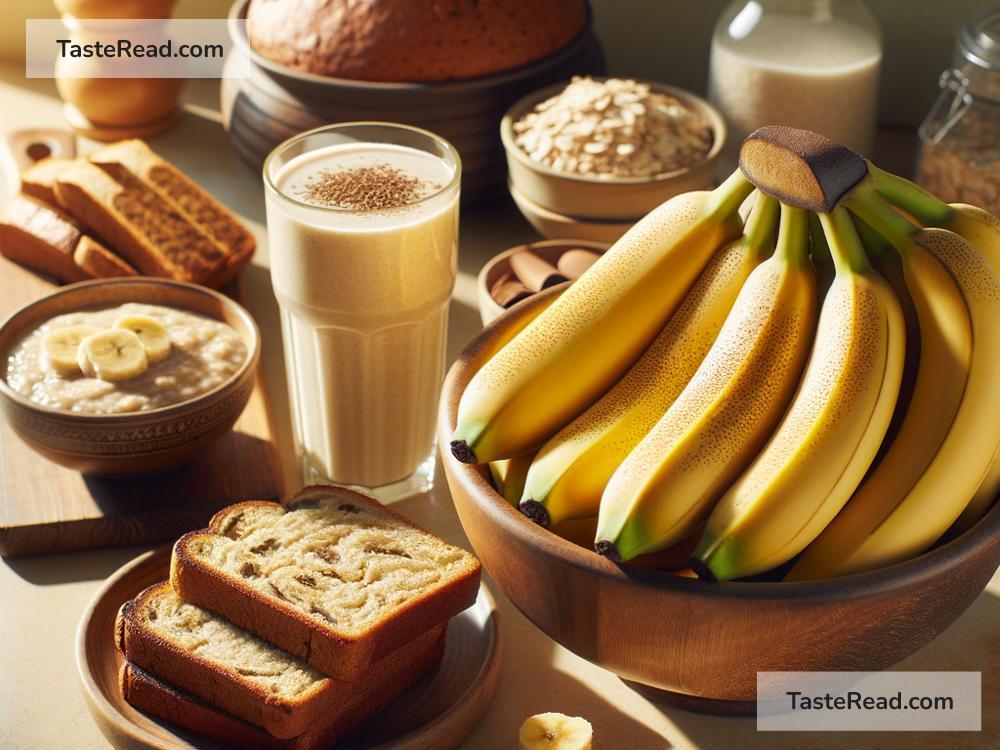How Bananas Became a Staple in Every Kitchen
Bananas are one of the most beloved fruits worldwide. Found in almost every kitchen, they are easy to eat, affordable, and packed with nutrients. But have you ever wondered how bananas became so popular? This blog will explore the fascinating history of bananas, their journey across the globe, and why they hold such an important place in our daily lives.
Humble Beginnings
Bananas are believed to have originated in Southeast Asia, primarily in Malaysia, Indonesia, and the Philippines. Over 7,000 years ago, people in these regions started cultivating bananas for food. These original bananas were not like the sweet, creamy fruit we know today. Wild bananas were smaller and filled with hard seeds. Over time, farmers selectively bred bananas to create a seedless, easy-to-eat version—the type of banana most of us enjoy today.
Bananas spread from Southeast Asia to other parts of the world as traders carried them along their routes. By 2000 BCE, bananas had traveled to India and eventually made their way to other parts of Asia and Africa. The fruit’s popularity grew because it was easy to transport, highly nutritious, and adaptable to different climates.
Arrival in the West
Bananas didn’t reach Europe or the Americas until much later. Spanish and Portuguese explorers were responsible for introducing the fruit to new continents during the Age of Exploration in the 15th and 16th centuries. They established banana plantations in the Caribbean, Central America, and South America, where the warm, tropical climates were perfect for growing bananas.
These plantations began producing bananas on a larger scale for export. By the 19th century, bananas were being sold in European and American markets. At first, bananas were considered an exotic luxury item, reserved for the wealthy. However, advances in transportation and refrigeration made it easier to ship bananas to different parts of the world. As a result, bananas became widely available and more affordable, transforming them into a household staple.
The Rise of the Banana Industry
By the late 19th and early 20th centuries, bananas had become a booming industry. Major companies like United Fruit Company (now Chiquita) and Standard Fruit Company (now Dole) dominated the banana trade. These companies invested heavily in plantations, shipping lines, and marketing strategies. Their efforts made bananas one of the first globally traded fruits.
The banana’s popularity soared because it was convenient and versatile. Bananas didn’t require peeling devices or cooking, making them perfect for on-the-go snacks. They were a hit with people of all ages, especially kids. In addition, bananas were cheap compared to other fruits, which made them accessible to families with tight budgets.
Companies also promoted the health benefits of bananas, emphasizing their high levels of potassium, vitamin B6, and fiber. Bananas gained a reputation as a “superfood” long before the term became trendy. This combination of affordability, convenience, and nutrition cemented bananas as an essential kitchen item.
Kitchen Versatility
Bananas aren’t just easy to eat raw—they’re incredibly versatile in the kitchen. Over time, people have discovered countless ways to enjoy them. You can put them in smoothies, bake them into banana bread, make pancakes with them, or even grill them as a dessert. Bananas also pair well with other foods, such as peanut butter, oats, and chocolate, making them a favorite ingredient for recipes around the world.
Their versatility also means that bananas work for all sorts of occasions. Need a quick breakfast? Grab a banana. Forgot dessert for a dinner party? Whip up banana pudding or a batch of fried bananas in a pinch. They fit seamlessly into almost every mealtime and culinary need.
The Global Love Affair
Today, bananas are grown in over 135 countries and consumed by millions every day. Countries like India, China, Brazil, and Ecuador are some of the largest producers of bananas, ensuring a steady global supply. In fact, bananas are so widely loved that they are the fourth most important crop in the world after rice, wheat, and corn.
The fruit connects cultures and traditions across the globe. In some Asian countries, banana leaves are used as plates or wraps for food. In the Caribbean, bananas are cooked into savory dishes like plantain stew. And in many Western kitchens, bananas are a staple ingredient for quick breakfasts and desserts.
Challenges and the Future
Despite their popularity, the banana industry faces challenges. Diseases like Panama disease threaten banana crops worldwide. Since most commercial bananas come from a single variety—the Cavendish banana—this lack of genetic diversity makes them vulnerable to disease. Efforts are underway to develop more resistant banana varieties to ensure their survival.
Additionally, the banana trade has a complicated history, with concerns about labor practices and environmental impacts on banana plantations. Organizations are working to create fair-trade and sustainable options, so consumers can enjoy bananas guilt-free.
Conclusion
Bananas have come a long way from their wild origins in Southeast Asia to becoming a kitchen superstar. Their affordability, convenience, nutrition, and versatility make them an essential part of our lives. Next time you grab a banana, think about the incredible journey it took to reach your kitchen—and why millions of people worldwide appreciate this humble, delicious fruit.
Bananas aren’t just food; they’re history, culture, and a symbol of global connection. And as they continue to adapt to challenges, there’s no doubt that bananas will remain a household staple for generations to come.


